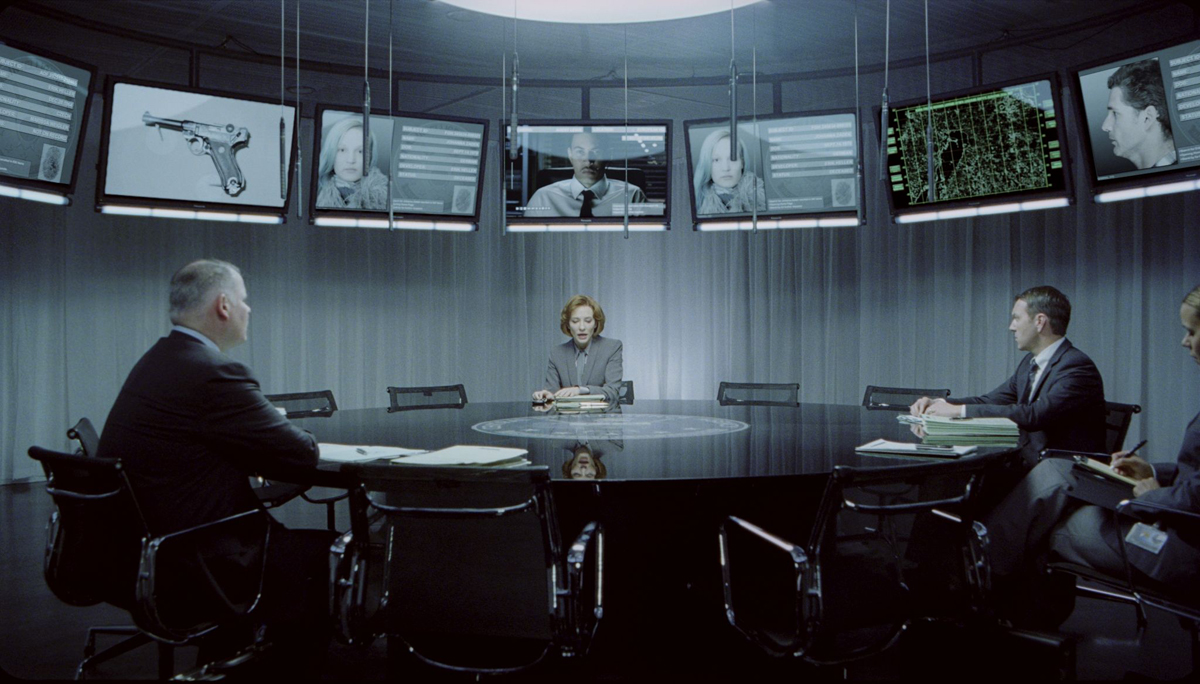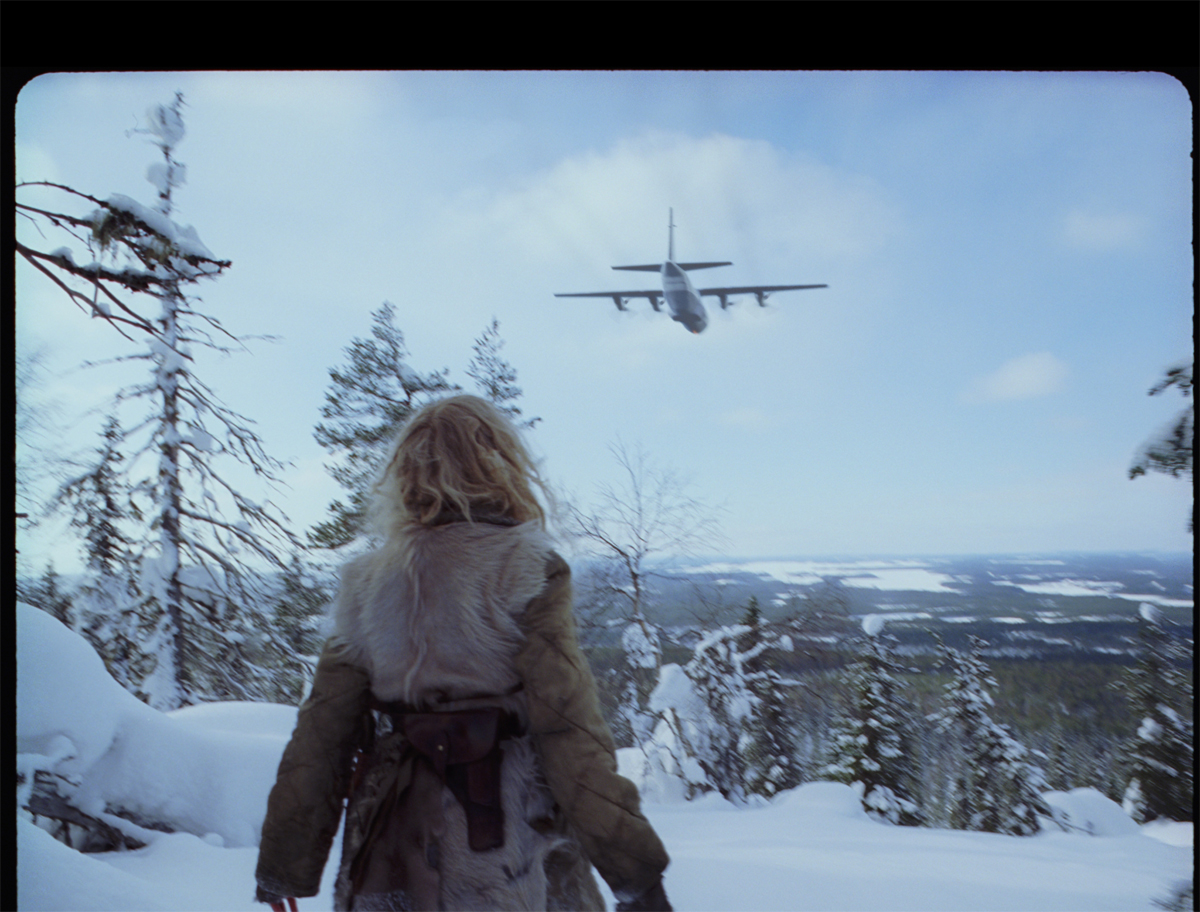Brendan Taylor began his career as on-set assistant for the series HELEN OF TROY. In 2004, he joined Mr. X and participates in projects such as 16 BLOCKS and SILENT HILL as VFX coordinator. Thereafter, it continues to be present on set for movies like SHOOT ‘EM UP and WHITEOUT and VFX supervisor for LUST CAUTION or TAKING WOODSTOCK.
What is your background?
I started as an on-set assistant for a director on a TV mini-series called HELEN OF TROY. I met Sam Nicholson, the VFX supervisor and he took me under his wing and showed me the ropes. After the shoot in Malta, he invited me to come to LA and work for Stargate Los Angeles. I worked in the Los Angeles office, then the Vancouver office as a VFX coordinator. Shortly after, Dennis Berardi contacted me about working at Mr X. I’ve been there since 2004.
How did your collaboration with director Joe Wright?
Joe is a cinematic thinker. He thinks in terms of shots, lighting, music and mood. So he really has a clear vision of what he wants. That isn’t to say that there isn’t room for creativity. He sets the mood for the shot or the sequence and then turns it over to Alwin Kuchler (Directory of Photography), Sarah Greenwood (Production Designer) and myself to design something that fits within the specific parameters he has set out. He had never really done a visual effects film before, but in no means was he a novice. He was very adept at thinking in terms of what he wanted to see and we would discuss the best way of doing it. He also plays music on set which is really great for keeping spirits up, but more importantly its communicates the mood of the scene to everyone there.
What was his approach about visual effects?
He is very trusting. He just tells you what he wants and allows you the space you need to complete it. He hadn’t done many big VFX shots before, so if he was nervous or apprehensive, it didn’t show.
How did Mr. X got involved on this movie?
We have worked with Focus Features a lot. They asked us to come in and help problem solve with the team over what could be digital and what could be practical in an effort to bring the budget down.
What are the sequences made by Mr. X?
We did 192 shots throughout the entire film. The big sequences were the airplane, the tunnel escape and the container park.
About the hunting sequence of Hanna. How did you create the arrow that hits the deer?
Members of our tracking team at Mr X (Jason Edwardh and Matt Ralph) gave me a diagram of where to put the tracking markers on the reindeer. The tracking markers gave us position for the arrow and we could also derive muscle movement data. The tracking was pretty straight forward, but the animation took some fine tuning. Eventually we found some (horrible) video reference of a deer running with an arrow in its side. That really informed the animation.
Are you involved on the shots on the frozen lake?
Marginally. We had to clean up the snow on the ground because it got trampled after many takes and it needed to appear pristine.
Can you tell us about the C-130 aircraft? How have you created and integrated into the shots?
We modeled and textured it based on internet photographs, but also from texture photographs we had at Mr X. Chris MacLean oversaw the building and lighting of the shot. It was composited by Rob Greb. I shot an HDRI while out in Finland, but it was only used as a stepping off point. I could only get about 5 feet off the ground to take the HDRI (which I took with a Canon 5D, Sigma 8mm fish eye lens), which would give an inaccurate representation of the environment the plane was flying in. To get a truly accurate HDRI, I would have to be 30 up in the air above the green tree tops. We ended up using the HDRI for sun direction and sky tone and supplemented it with green tree tops in Photoshop. We also made CG smoke trails which really helped the integration.
How big was the real set of the huge ventilation ducts in the military base from which escapes Hanna? How did you create these set extensions?
The actual set was huge – built in Mitte Hall at Babelsberg studios in Berlin. The art department built the holding cells and a 30′ section of the tunnel which wasn’t long enough to stage the action that Joe wanted. As she’s running away, Hanna looks to see a giant steel door closing. She dives and slides under the door just in time. We initially we going to do a combination of practical, CG and projections. But, in the end, the team did such an amazing job of matching the look of the concrete and the practical lighting, that we did the shots full CG. It simply gave us more flexibility. That sequence was lit by Chris MacLean, and comped by Rob Greb and Greg Astles.
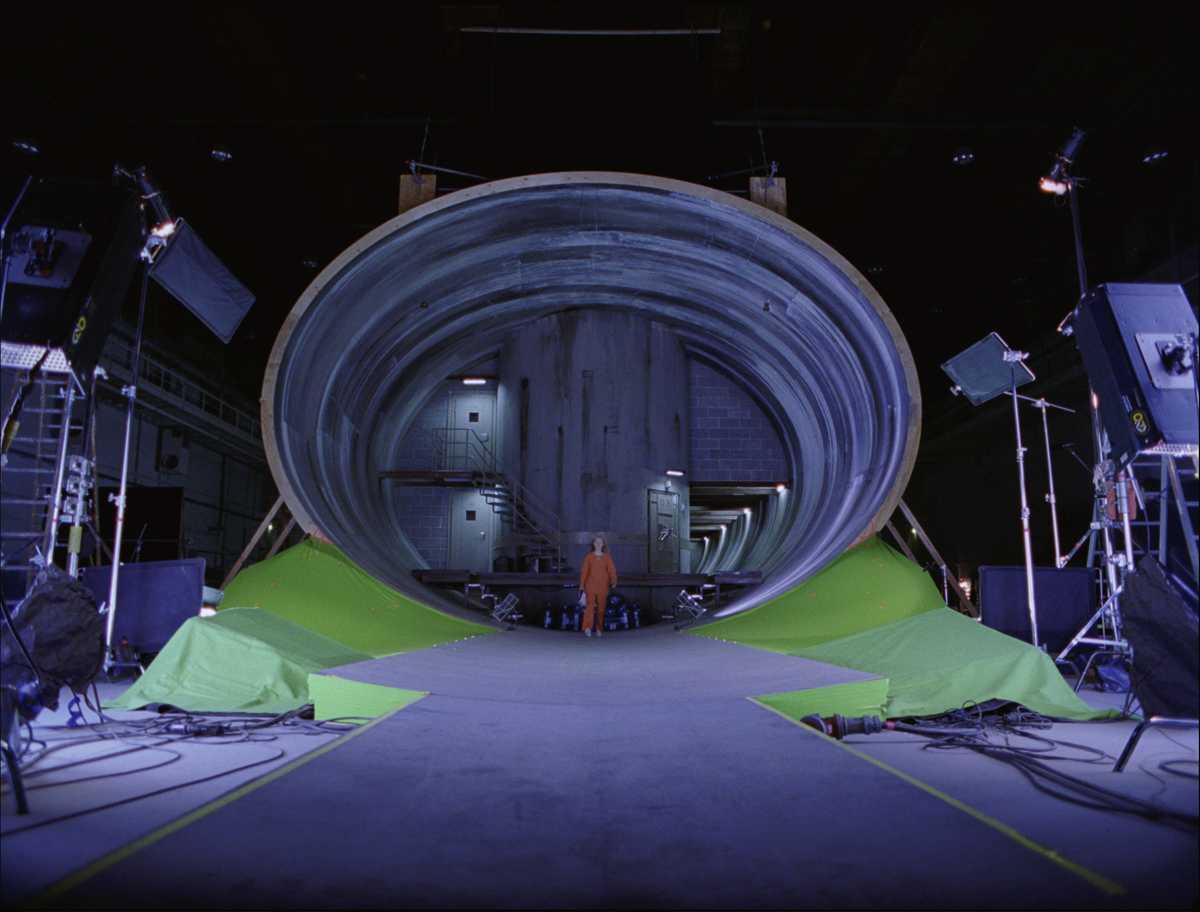 |
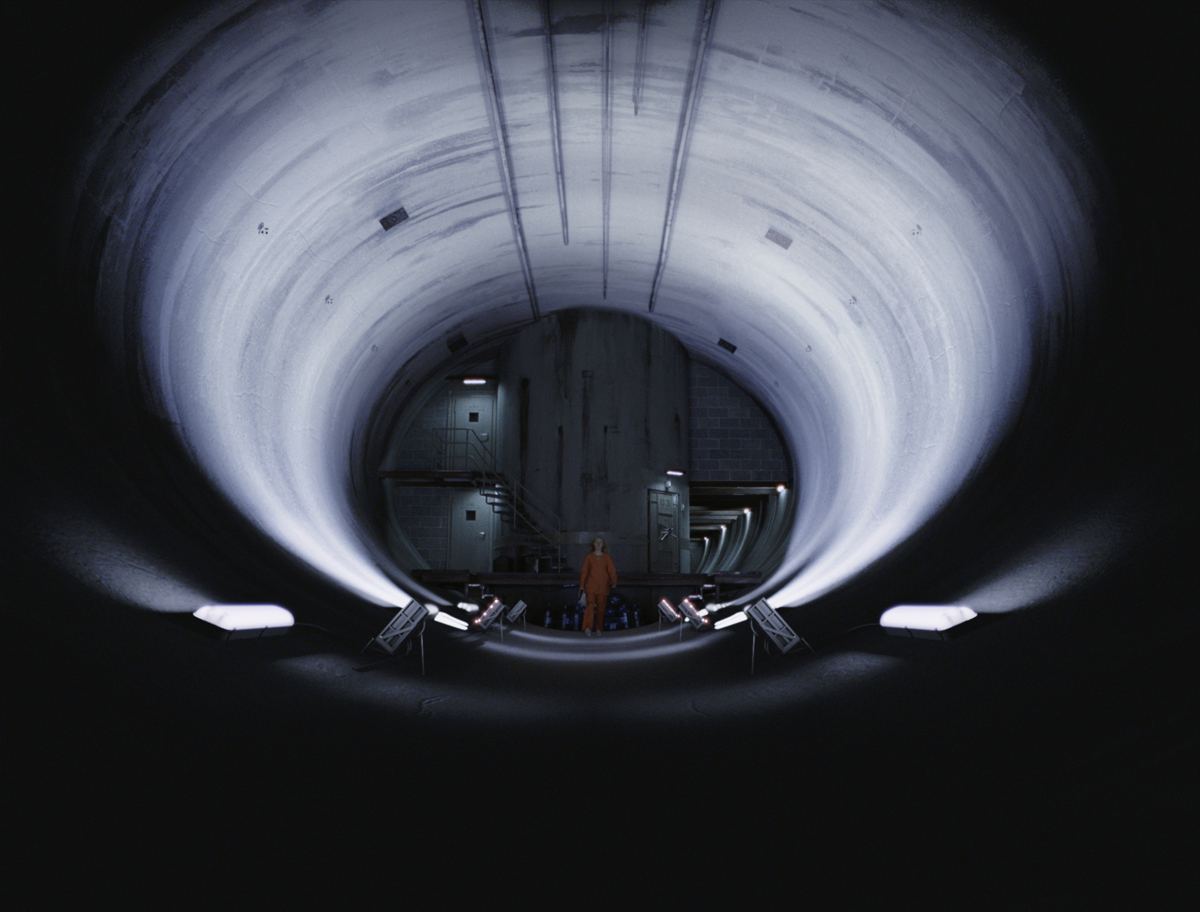 |
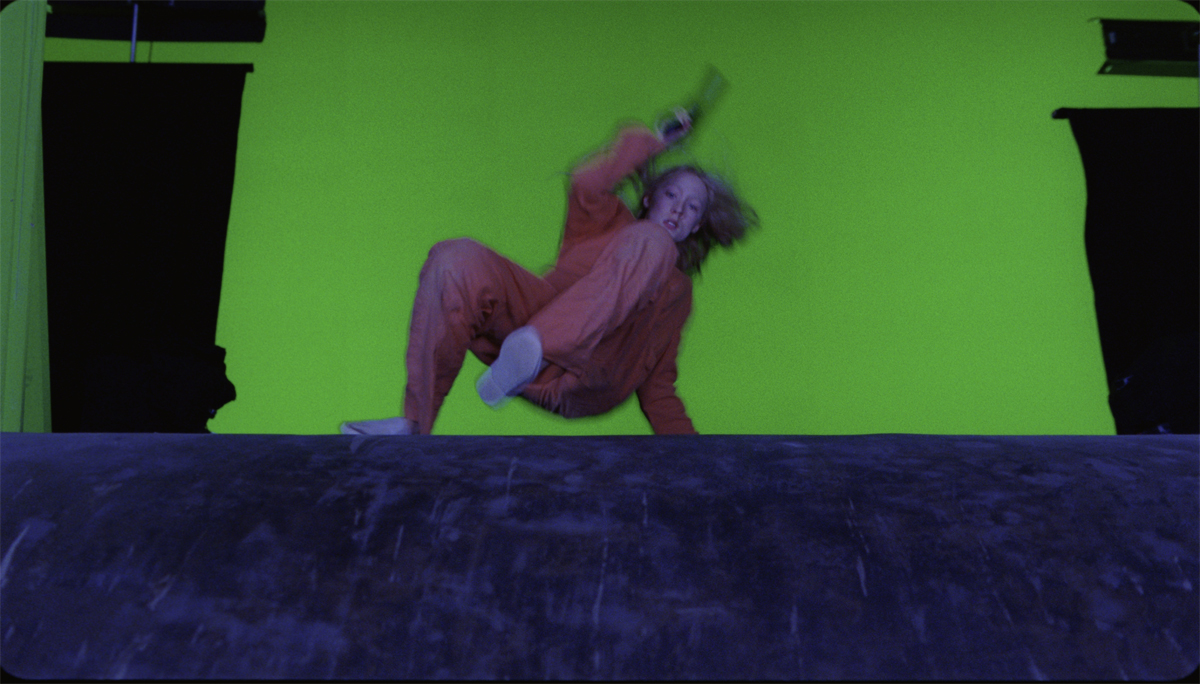 |
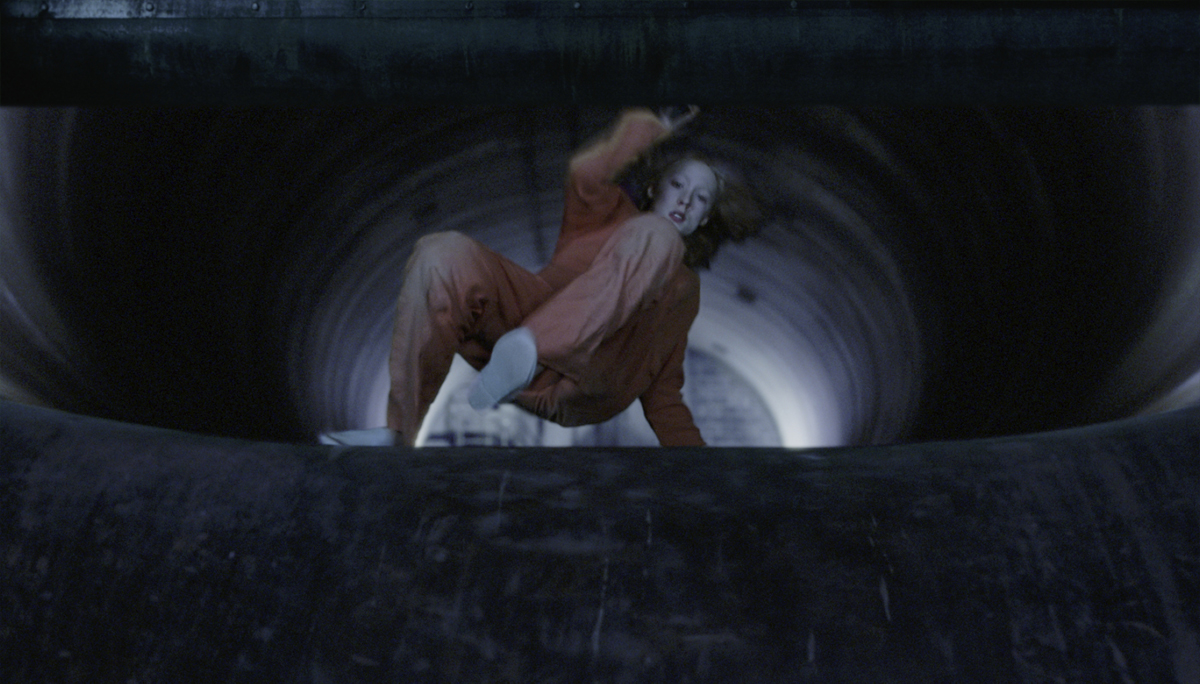 |
Have you created some matte-paintings for the many landscapes that we saw in the movie?
Yes, we had a number of matte paintings. In most cases we would shoot the FG plate, then I would go to various locations and shoot stills for our matte painters to work with – matching the lighting and perspective as closely as possible.
There’s a scene where we see the family driving through Spain, being tailed by “Razor” on a motorbike. The foreground plate was shot in Morocco. In post-production, I went to Spain and shot stills and HD video of a town called Segovia. Matte painter Matt Schofield then stitched the stills together and added some really beautiful lighting to the shot. I really credit him for the final look of that shot – his execution was very thoughtful and artistic.
We also had an exterior shot of the CIA facility. We shot the FG in Berlin at a Velodrome and were meant to extend the background to make it look like the facility was in a forest in Virginia. I never had an opportunity over the course of principal photography to shoot stills for the matte painters, so we would have to create it from scratch. Initially, we tried using various elements of high angle trees from our database, but that never works. If you do find one that matches in perspective, the lighting will not match and it’s useless to try and relight a tree. When you start putting all of the elements together, the cracks start to show very quickly. Joe and Paul Tothill, the editor, weren’t liking the shot; so, in a last ditch effort, I took my camera out to a local park in Toronto and photographed trees from a hilltop – matching the perspective and lens. In the end the shot went together quite well. It never fails… if you don’t prepare properly for a matte painting shot, they will be 10 times more difficult.
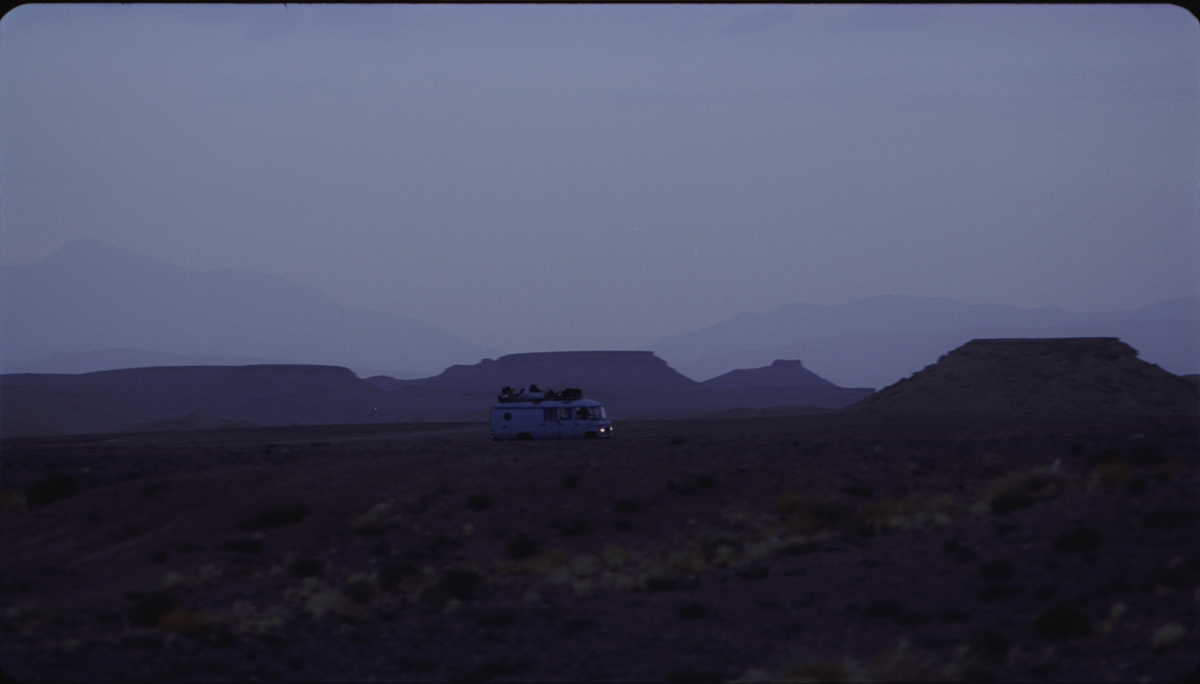 |
 |
How were the interior shots of vehicles were prepared and created?
We shot the foreground greenscreen in a small stage in Morocco, but the BG plates were shot in Hamburg, 2 months previous. When in Hamburg, we got Joe into the van with a view finder and he showed us the angles and lenses he would shoot the greenscreen with. That night we went out and shot the background driving plates, with a stabilized head at the lenses he suggested, but also a bit wider. We wanted to be sure that we could incorporate any small camera movements that may come up when shooting the greenscreen portion.
When it came to shooting the greenscreen, Joe picked 2 background angles that he liked. We had the background plates on playback and Alwin Kuchler and his team synced their interactive lighting to that. When it came to post, we added a few flares of passing street lamps and a little high frequency buzz when the van goes over bumps.
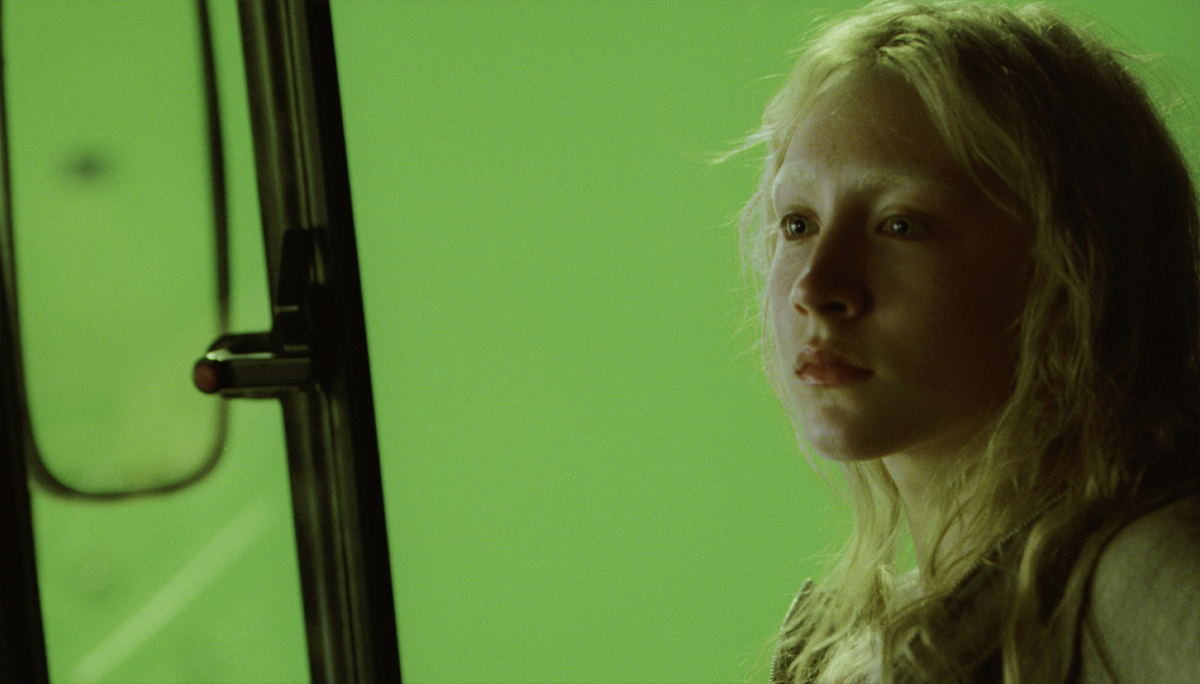 |
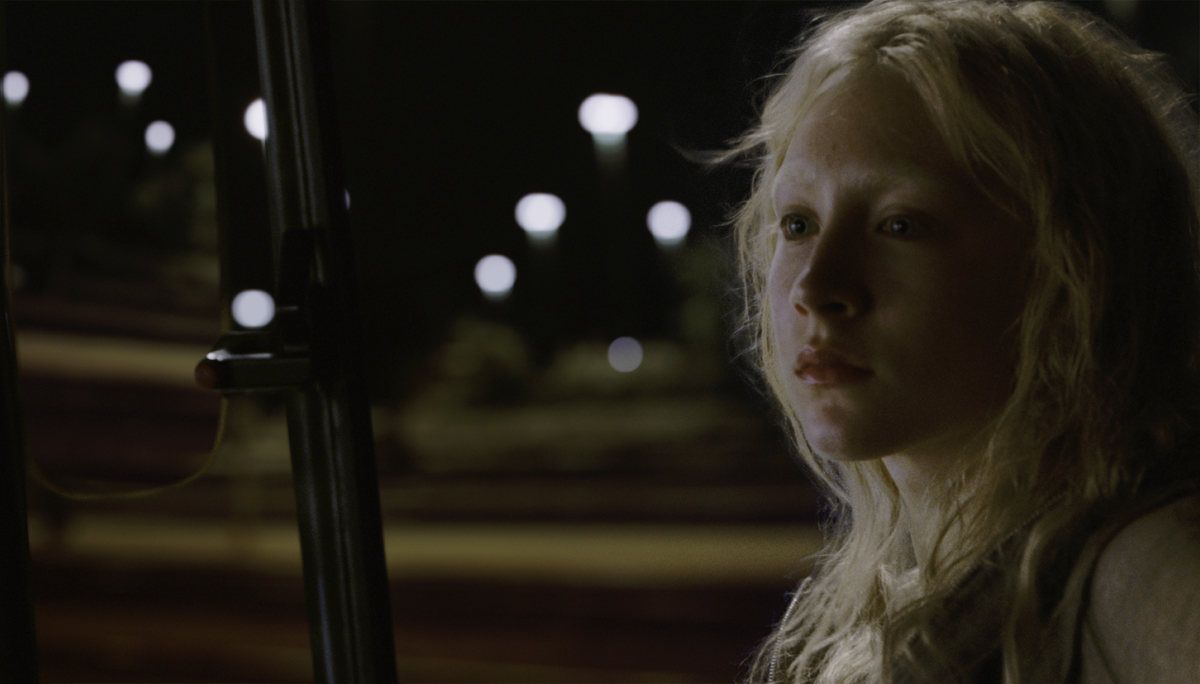 |
Are you involved in the impressive continuous shot that follows Erik from a bus, crossing a railway station to finally have a fight underground?
Very minimally. We did an extension on the knife that Erik pulls out.
How was the shooting of the containers sequence? What was the actual size of the set and how did you create the extensions?
The containers were very difficult to shoot because it was cold, it was damp and it was 2 weeks of night shoots. The art department was able to get 200 containers to work with. The way that they postioned the containers was based in part on Joe and Jeff Imada’s choreography. Joe wanted to have certain cat and mouse beats, but also full out sprinting beats, so the angles and stacking of the containers had to accommodate both types of filming. What we were left with was a large 50m by 100m area to film in. The only time that you saw off this massive set was in 2 wide shots.
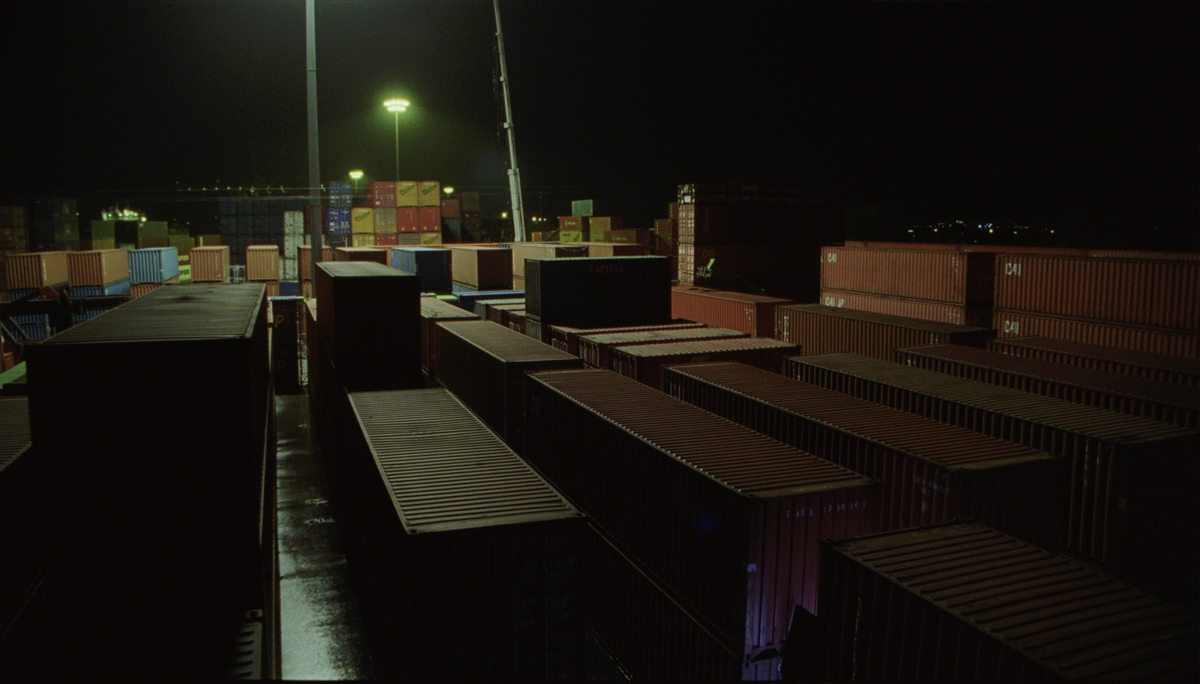 |
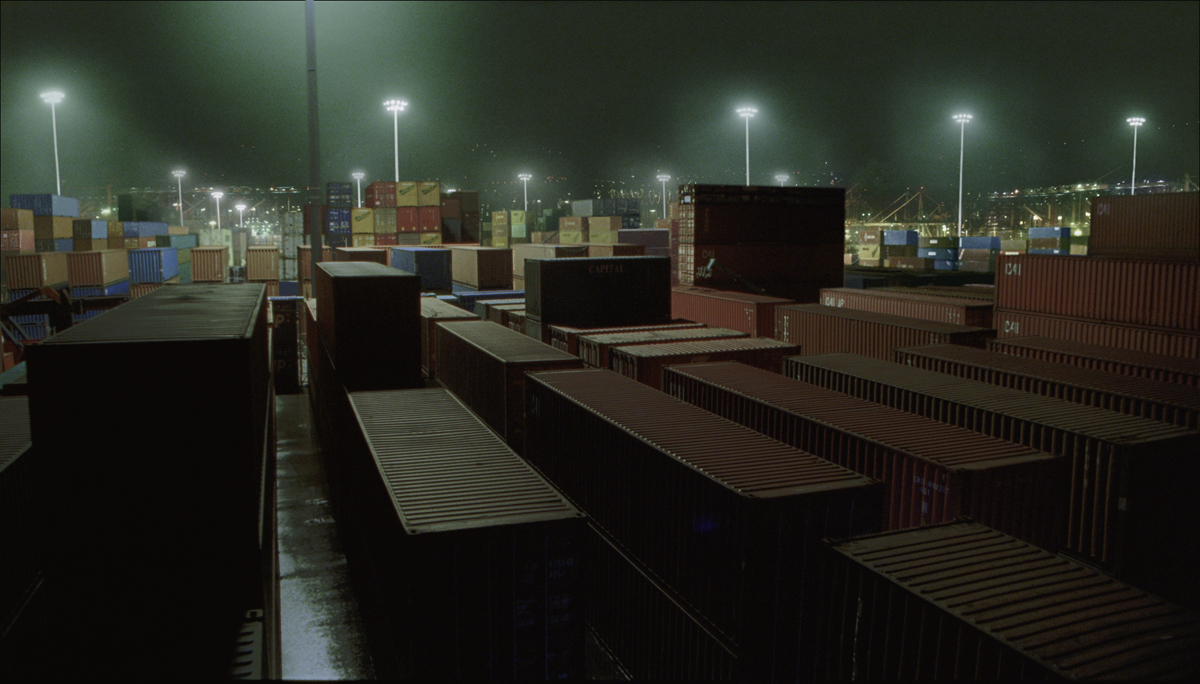 |
After the foreground plates were shot, I got into a lift and took as many photos from the correct perspective as possible. Hamburg at night is a very haunting place. It has these container parks that seem to extend off into infinity and there is a really nice contrast between the cool mercury vapour lights and the warm sodium vapour lights. These 2 matte paintings were done by Milan Schere, a German native who understood exactly what Hamburg looked like. The first shot is a crane down. Milan broke the matte painting into about 50 different layers and projected them on to cards that Rob Greb then comped. The second shot is a lock off that was also comped Rob Greb.
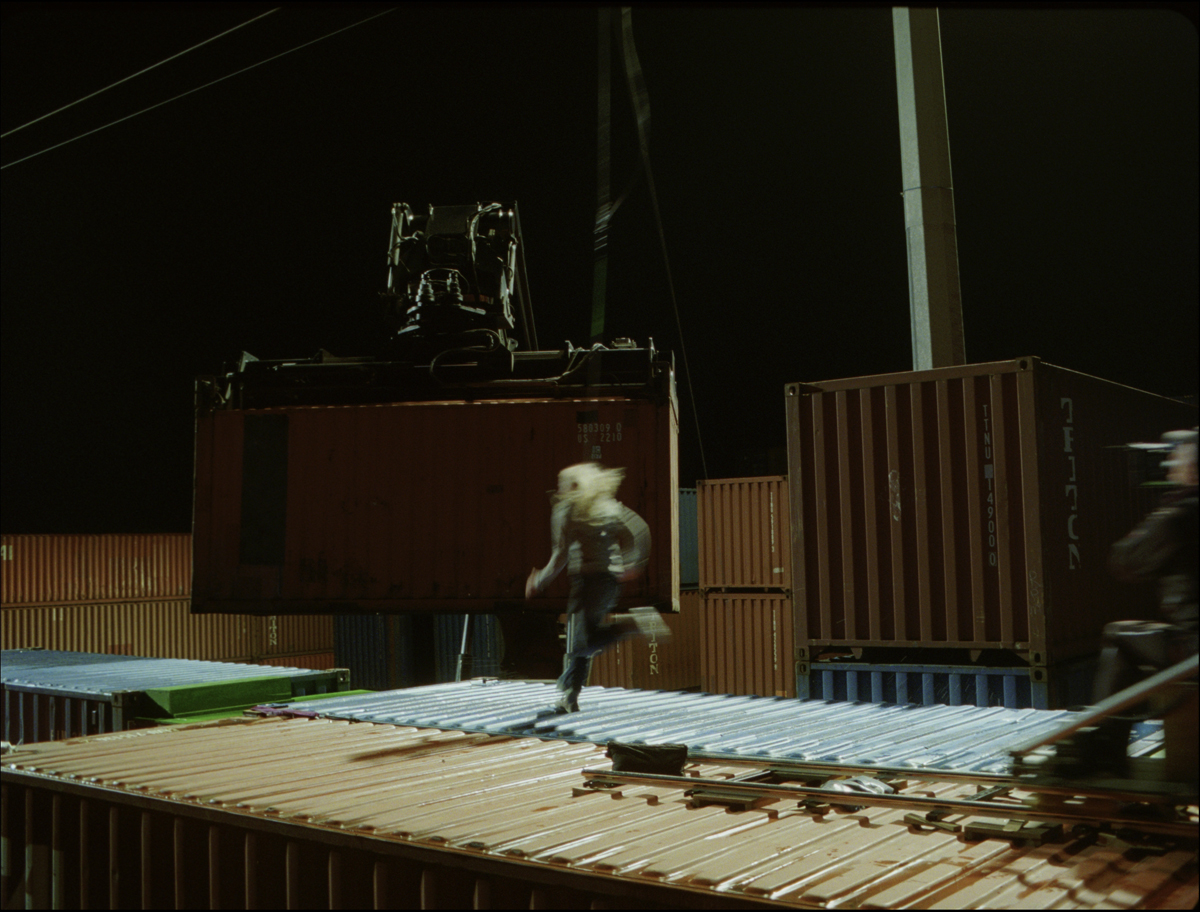 |
 |
What was the biggest challenge on this project?
The shoot was grueling. We started in -30 in Northern Finland and ended up in 40 degrees in the Moroccan desert. It was quite difficult, as a VFX supervisor, to be that mobile all of the time. Most of the time, you have a lot of access to the cutting room and the production office and even to the VFX studio. In this case, we were all roughing it. I also had to make sure that I got everything I needed at every location, because there was no chance on going back. Ever.
Has there been a shot or a sequence that prevented you from sleeping?
Haha. The exterior CIA shot, the tunnel…umm….all of them.
How long have you worked on this film?
I started in January of 2010 and finished in December.
How many shots have you made and what was the size of your team?
192 shots. A team of roughly 50.
What do you keep from this experience?
I learned a lot from Joe Wright. He’s a real talent, but he also leads the team with a gentle hand. I learned a lot from him about thinking cinematically as opposed to just thinking visually.
What is your next project?
I’m just finishing up a film called THE VOW with Mr X.
What are the 4 movies that gave you the passion of cinema?
BUTCH CASSIDY AND THE SUNDACE KID, JAWS, 400 BLOWS and SEVEN SAMURAI.
A big thanks for your time.
// WANT TO KNOW MORE?
– Mr. X: Official website of Mr.X.
// HANNA – VFX BREAKDOWN – MR. X
© Vincent Frei – The Art of VFX – 2011


